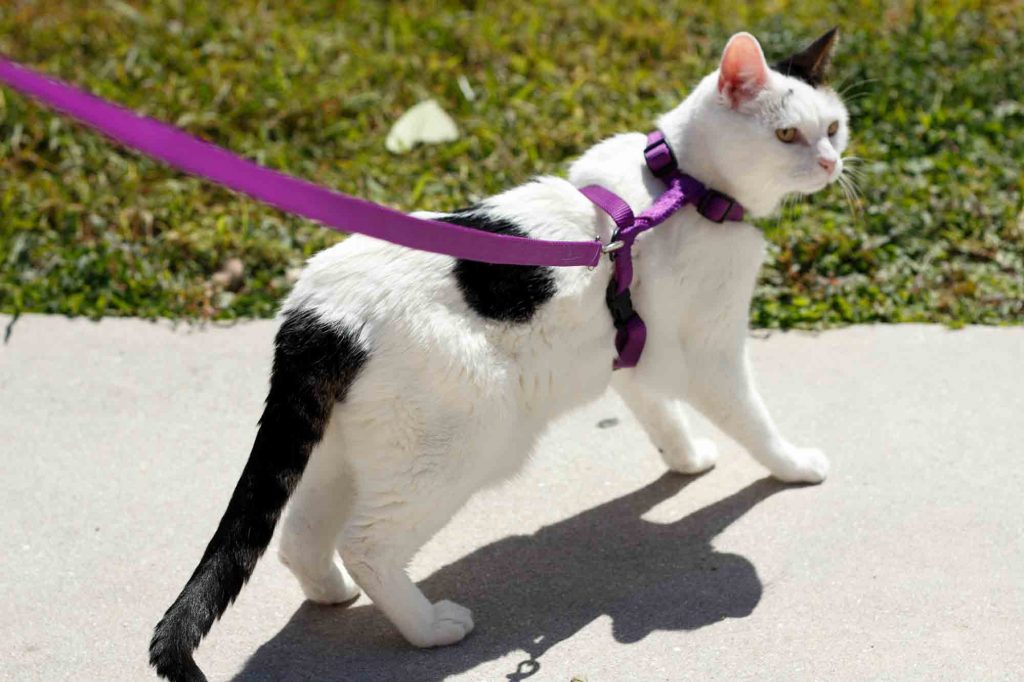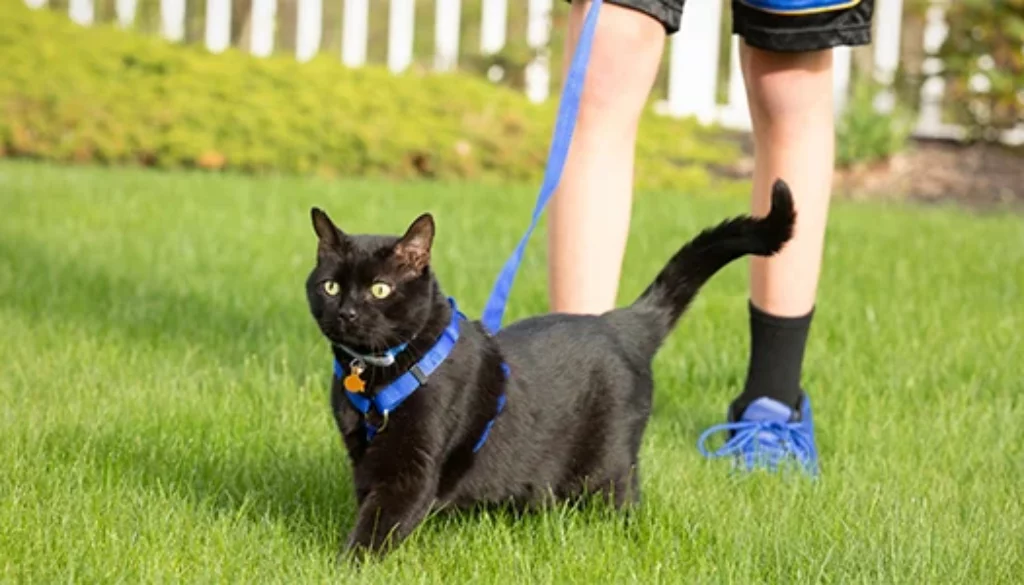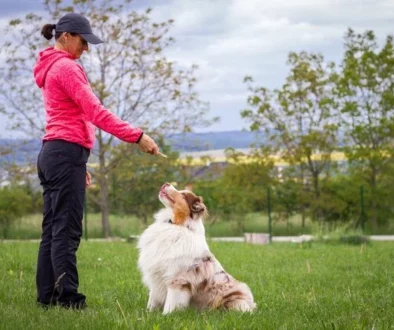How to Train Your Cat to Walk on a Leash
Cats are known for their independent nature and love for exploring the world around them. While many people associate walking on a leash with dogs, it’s also possible to train a cat to walk on a leash. Leash training can provide numerous benefits for both indoor and outdoor cats, such as mental stimulation, exercise, and enrichment. In this article, we will guide you through the process of how to train your cat to walk on a leash, step by step.
Importance of Training Cats to Walk on a Leash
Leash training allows cats to safely enjoy the outdoors while under your supervision and control. It helps prevent them from getting lost, encountering dangers, or causing harm to themselves or the environment. By teaching your cat to walk on a leash, you can provide them with physical exercise and mental stimulation, reducing the risk of boredom-related behavioral issues.
Benefits of Leash Training for Cats
Leash training offers several benefits for both cats and their owners. It allows cats to experience new environments, sights, sounds, and smells, stimulating their senses and keeping them mentally engaged. Regular outdoor walks can also help alleviate stress, anxiety, and pent-up energy in cats. For owners, leash training fosters a closer bond with their feline companions and provides an opportunity to share rewarding experiences together.

Understanding Your Cat’s Behavior
Before embarking on leash training, it’s essential to understand your cat’s natural instincts and behavior. Cats are territorial animals with strong hunting instincts. They might exhibit different personalities, ranging from adventurous and outgoing to cautious and timid. Knowing your cat’s personality will help you tailor the training process to their specific needs and preferences.
Getting the Right Equipment
To begin leash training, you need the appropriate equipment. Choose a harness specifically designed for cats, as collars can be unsafe and uncomfortable. Measure your cat’s girth accurately to ensure a proper fit. The leash should have a comfortable grip and be lightweight for both you and your cat.
Preparing Your Cat for Leash Training
Introduce the harness to your cat gradually, allowing them to investigate and get accustomed to it. Associate the harness with positive experiences by offering treats and praise. Avoid forcing the harness on your cat, as it can create a negative association. Patience and gentle encouragement are key during this phase.
Indoor Training Sessions
Create a safe and comfortable environment for your cat’s initial leash training. Start by attaching the harness and leash indoors. Allow your cat to explore while dragging the leash behind them. Reward them with treats and praise for accepting the leash’s presence. Gradually increase the length of indoor training sessions, encouraging your cat to walk alongside you.
Gradual Exposure to the Outdoors
Once your cat becomes comfortable walking indoors, it’s time to introduce them to the great outdoors. Start with short outdoor sessions in a secure and quiet space, such as a fenced yard or a peaceful park. Allow your cat to explore while keeping a close eye on their behavior. Gradually increase the duration and distance of the outdoor walks as your cat gains confidence.
Encouraging Good Leash Behavior
Use positive reinforcement to reward your cat’s good leash behavior. Offer treats and praise whenever they walk calmly beside you or respond to gentle guidance. Avoid using punishment or force, as it can lead to fear or resistance. If your cat exhibits unwanted behaviors, such as pulling or freezing, redirect their attention with toys or treats.
Dealing with Challenges
Training a cat to walk on a leash can be a challenging task, and each cat is unique. Patience and persistence are crucial throughout the training process. Some common challenges include initial reluctance to wear a harness, fear of new environments, distractions during walks, or resistance to commands. Adapt your training techniques accordingly, using positive reinforcement and understanding your cat’s limits.

Advanced Training Techniques
Once your cat becomes proficient at walking on a leash, you can progress to more advanced training techniques. Teach them commands like “sit” and “stay” to enhance their leash manners. Introduce agility exercises or games, making the walks more interactive and mentally stimulating for your cat.
Safety Precautions
While walking your cat on a leash can be an enriching experience, it’s essential to prioritize their safety. Identify potential hazards, such as busy roads, toxic plants, or aggressive animals, and avoid exposing your cat to such risks. Always keep a close eye on your cat’s behavior and body language during walks, ensuring they are comfortable and content.
Maintenance and Continued Training
Consistency is key when maintaining your cat’s leash training. Practice regular walking sessions, gradually increasing the frequency and duration to keep your cat engaged. Even after your cat becomes proficient at walking on a leash, it’s important to continue training to reinforce good behaviors and prevent regression.
Enjoying Walks with Your Leash-Trained Cat
Once your cat is comfortable walking on a leash, you can both enjoy the benefits of outdoor walks together. Create a stronger bond with your feline companion and revel in the shared experiences of exploring nature. Watch your cat’s excitement and curiosity as they encounter new sights, sounds, and smells, and cherish the special moments you have together.
Conclusion
Leash training your cat is a rewarding process that offers numerous benefits for both you and your feline companion. By understanding your cat’s behavior, using positive reinforcement, and providing a safe and comfortable environment, you can successfully train your cat to walk on a leash. Enjoy the journey of training and exploring the world together, and revel in the strengthened bond between you and your cat.
FAQs: Train Your Cat to Walk on a Leash
Can all cats be trained to walk on a leash?
While most cats can be trained to walk on a leash, some may not take to it as easily as others. It depends on their personality, previous experiences, and individual preferences. Patience, consistency, and positive reinforcement are key in the training process.
Is it safe to walk my cat outdoors in busy areas?
Walking your cat outdoors in busy areas can pose risks, such as traffic or encounters with other animals. It’s important to choose safe locations or invest in secure enclosures to allow your cat to enjoy outdoor experiences without exposing them to unnecessary dangers.
What if my cat refuses to wear a harness?
If your cat initially refuses to wear a harness, take it slow and be patient. Introduce the harness gradually, associating it with positive experiences and rewards. Offer treats and praise when your cat shows any signs of acceptance.
How long does it usually take to train a cat to walk on a leash?
The time it takes to train a cat to walk on a leash can vary. Some cats may pick it up quickly, while others may require more time and effort. On average, it can take several weeks to a few months of consistent training sessions for a cat to become comfortable walking on a leash.
Can I walk multiple cats on one leash?
Walking multiple cats on one leash is not recommended, as it can lead to entanglement or fights between the cats. It’s best to use separate leashes and handle each cat individually to ensure their safety and prevent any potential conflicts.
Also Read:



